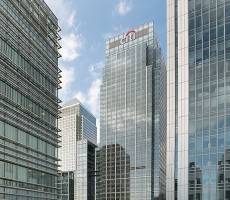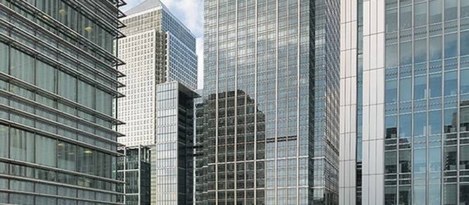July 12, 2016
Skyscrapers in London will be hardest hit by new business rates 0
 As we reported yesterday there are plans afoot to surround the ‘Walkie Talkie’ winner of last year’s Carbuncle Cup with other tall building. However for organisations interested in occupying a London skyscraper it’s worth noting that according to Colliers, businesses in London’s twenty tallest skyscrapers can expect to pay an extra £50 million under forthcoming major changes to business rates. In a data analysis published recently, Colliers has assessed the likely effects of forthcoming business rates changes – floor-by-floor – on the occupiers of London’s twenty tallest buildings. Overall, firms will need to cough up an extra £50m as business rates bills go from £194m to £243m over the next three years. And the infamous ‘Walkie Talkie’ at 20 Fenchurch Street, and now fully occupied – will see the largest increase with office occupiers and luxury rooftop restaurants faced with a business rates bill of over £19m by 2019, an increase of £5.1m compared with current levels.
As we reported yesterday there are plans afoot to surround the ‘Walkie Talkie’ winner of last year’s Carbuncle Cup with other tall building. However for organisations interested in occupying a London skyscraper it’s worth noting that according to Colliers, businesses in London’s twenty tallest skyscrapers can expect to pay an extra £50 million under forthcoming major changes to business rates. In a data analysis published recently, Colliers has assessed the likely effects of forthcoming business rates changes – floor-by-floor – on the occupiers of London’s twenty tallest buildings. Overall, firms will need to cough up an extra £50m as business rates bills go from £194m to £243m over the next three years. And the infamous ‘Walkie Talkie’ at 20 Fenchurch Street, and now fully occupied – will see the largest increase with office occupiers and luxury rooftop restaurants faced with a business rates bill of over £19m by 2019, an increase of £5.1m compared with current levels.







 It was Frank Lloyd Wright who said ‘a doctor can bury his mistakes but an architect can only advise his clients to plant vines’. His words will be ringing in the ears of London planners who have decided they need to do something about the blight of Rafael Viñoly’s reviled Walkie Talkie building at 20 Fenchurch Street, according to
It was Frank Lloyd Wright who said ‘a doctor can bury his mistakes but an architect can only advise his clients to plant vines’. His words will be ringing in the ears of London planners who have decided they need to do something about the blight of Rafael Viñoly’s reviled Walkie Talkie building at 20 Fenchurch Street, according to 























May 17, 2016
London’s central office market peak driving change for other zones 0
by Tobi Crosbie • Cities, Comment, Facilities management, Property
There are plenty of good reasons to believe that London’s Central office market has hit its peak. Rents are at an all-time high in the majority of core office locations and whilst the start of 2016 has seen rents rise, there is certainly a clear steadying of the pace. According to our own data, the Landlord’s quoted rents for offices across the entire Central London market. Core offices such as Mayfair and St James’s have reached levels of £150 per square foot (pfs) in Q1 2016 compared with £120 per square foot in Q1 2015 a rise of 25 percent in 12 months. That does sound excessive, until this is compared with the rises seen East of the city in so called ‘fringe markets’ of Clerkenwell, Old Street and Shoreditch. Here the rents have become eye watering. In Q1 2015, the prime quoting rent in Shoreditch had reached £55 psf. In Q1 2016, this number had reached £75 psf highlighting an increase in 12 months of over 35 percent.
(more…)